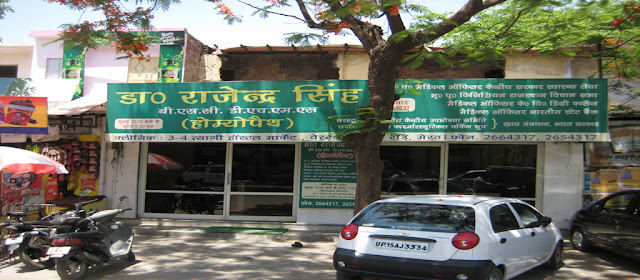Best Homeopathic Doctor for Diabetes
Diabetes- Diabetes is a lifelong (chronic) disease in which there are high levels of sugar in the blood
Type 1 diabetes Insulin-dependent diabetes; Juvenile onset diabetes; Diabetes - type 1
Causes- Type 1 diabetes can occur at any age. However, it is most often diagnosed in children, adolescents,
or young adults.
Insulin is a hormone produced by special cells, called beta cells, in the pancreas. Insulin is needed to
move blood sugar (glucose) into cells, where it is stored and later used for energy. In type 1 diabetes,
beta cells produce little or no insulin.
Without enough insulin, glucose builds up in the bloodstream instead of going into the cells. The
body is unable to use this glucose for energy. This leads to the symptoms of type 1 diabetes.
Symptoms- These symptoms may be the first signs of type 1 diabetes, or may occur when the blood sugar is
high:
Being very thirsty
Feeling hungry
Feeling tired or fatigued
Having blurry eyesight
Losing the feeling or feeling tingling in your feet
Losing weight without trying
Urinating more often
For other people, these warning symptoms may be the first signs of type 1 diabetes, or they may
happen when the blood sugar is very high
Deep, rapid breathing
Dry skin and mouth
Flushed face
Fruity breath odor
Nausea or vomiting, inability to keep down fluids
Stomach pain
Low blood sugar (hypoglycemia) can develop quickly in people with diabetes who are taking
insulin. Symptoms usually appear when the blood sugar level falls below 70 mg/dL.
Headache
Hunger
Nervousness
Rapid heartbeat (palpitations)
Shaking
Sweating
Weakness
Prevention
Diabetes Diet (Type 1)
GRAINS, BEANS, AND STARCHY VEGETABLES
Foods like bread, grains, beans, rice, pasta, and starchy vegetables are at the bottom of the pyramid
because they should serve as the foundation of your diet. As a group, these foods are loaded with
vitamins, minerals, fiber, and healthy carbohydrates.
It is important, however, to eat foods with plenty of fiber. Choose whole-grain foods such as wholegrain
bread or crackers, tortillas, bran cereal, brown rice, or beans. Use whole-wheat or other wholegrain
flours in cooking and baking. Choose low-fat breads, such as bagels, tortillas, English muffins,
and pita bread
VEGETABLES
Choose fresh or frozen vegetables without added sauces, fats, or salt. You should opt for more dark
green and deep yellow vegetables, such as spinach, broccoli, romaine, carrots, and peppers
FRUITS
Choose whole fruits more often than juices. Fruits have more fiber. Citrus fruits, such as oranges,
grapefruits, and tangerines, are best. Drink fruit juices that do NOT have added sweeteners or
syrups.
MILK
Choose low-fat or nonfat milk or yogurt. Yogurt has natural sugar in it, but it can also contain added
sugar or artificial sweeteners. Yogurt with artificial sweeteners has fewer calories than yogurt with
added sugar.
MEAT AND FISH
Eat fish and poultry more often. Remove the skin from chicken and turkey. Select lean cuts of beef,
veal, pork, or wild game. Trim all visible fat from meat. Bake, roast, broil, grill, or boil instead of
frying.
FATS, ALCOHOL, AND SWEETS
In general, you should limit your intake of fatty foods, especially those high in saturated fat, such as
hamburger, cheese, bacon, and butter.
If you choose to drink alcohol, limit the amount and have it with a meal. Check with your health care
provider about a safe amount for you.
Sweets are high in fat and sugar, so keep portion sizes small. Other tips to avoid eating too many
sweets.








That is the reason deal with one should specified research a long time before authoring. Could be potential towards further fascinating post in this manner. Baby Feeder
ReplyDelete